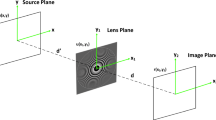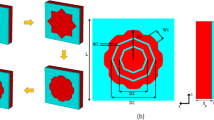Abstract
Commercial and military applications for ir detectors continually push the performance envelope to achieve the highest signal-to-noise ratio at the longest possible wavelength. The highest performance is generally achieved when the detector cutoff wavelength is made as short as possible to minimize dark current while maintaining high uniform responsivity over the system optical passband. This requires an accurate prediction of the detector spectral shape near cutoff. As the incident wavelength approaches cutoff, the optical absorption coefficient decreases and internal reflections within the layer become important, causing constructive or destructive interference and consequently modulation of the detector spectral shape. The analysis is complicated since the absorber layer often includes compositional grading, particularly for very long-wavelength IR devices. This article describes an approach for analyzing the spectral response of backside-illuminated, compositionally graded detectors, and the results are compared with experimental data. The analysis shows that the spectral shape near cutoff is impacted by a weak resonance within the absorber created by a combination of a strong reflection from the detector front side and a weak reflection from the absorber-substrate backside interface. The analysis, which is an extension of the work of Rosenfeld et al., takes into account the weak resonance through computation of the optical field and generation rate by the Wetzel-Kramers-Brillioun (WKB) method. The method has been compared with experimental data for several cases using both parabolic and hyperbolic models for the absorption coefficient, and excellent agreement is achieved with the hyperbolic model.
Similar content being viewed by others
References
D. Rosenfeld, V. Garber, V. Ariel, and G. Bahir, J. Electron. Mater. 24, 1321 (1995).
G. Tyras, Radiation and Propagation of Electromagnetic Waves (New York: Academic Press, 1969).
S.E. Schacham and E. Finkman, J. Appl. Phys. 57, 2001 (1985).
K. Moazzami, J. Phillips, D. Lee, D. Edwall, M. Carmody, E. Piquette, M. Zandian, and J. Arias, J. Electron. Mater. 33, 701 (2004).
S. Krishnamurthy, A.B. Chen, and A. Sher, J. Appl. Phys. 80, 4045 (1996).
K. Moazzami, D. Liao, J. Phillips, D. Lee, M. Carmody, M. Zandian, and D. Edwall, J. Electron. Mater. 32, 646 (2003).
Author information
Authors and Affiliations
Rights and permissions
About this article
Cite this article
Lee, D.L. Modeling of optical response in graded absorber layer detectors. J. Electron. Mater. 35, 1423–1428 (2006). https://doi.org/10.1007/s11664-006-0278-7
Received:
Accepted:
Issue Date:
DOI: https://doi.org/10.1007/s11664-006-0278-7




